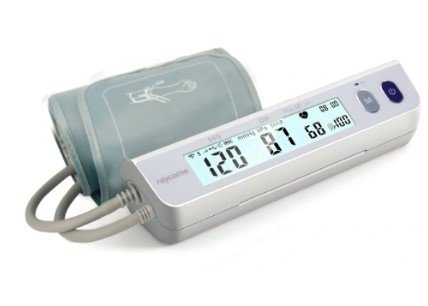Exploring Biomarkers in Alzheimer's Disease Through Phlebotomy Studies in the United States
Summary
- Researchers are investigating a variety of Biomarkers in Alzheimer's disease through phlebotomy studies in the United States.
- These Biomarkers include amyloid beta, tau protein, neurofilament light chain, and inflammatory markers.
- Understanding these Biomarkers can help in early diagnosis, monitoring disease progression, and developing targeted treatments for Alzheimer's disease.
Introduction
Alzheimer's disease is a progressive neurodegenerative disorder that affects millions of people worldwide. While there is currently no cure for Alzheimer's disease, researchers are actively investigating Biomarkers that can help in early diagnosis, monitoring disease progression, and developing targeted treatments. Phlebotomy studies play a crucial role in identifying and analyzing these Biomarkers. In the United States, several research institutions are leading the way in studying specific Biomarkers in Alzheimer's disease through phlebotomy.
Biological Markers in Alzheimer's Disease
Amyloid Beta
Amyloid beta is a protein that forms plaques in the brains of people with Alzheimer's disease. Phlebotomy studies have shown that measuring levels of amyloid beta in the blood can potentially help in diagnosing Alzheimer's disease early. Researchers are also studying the role of amyloid beta in disease progression and its potential as a target for treatment.
Tau Protein
Tau protein is another biomarker that is associated with Alzheimer's disease. Phlebotomy studies have shown that elevated levels of tau protein in the blood are linked to brain damage and cognitive decline in Alzheimer's patients. Researchers are investigating how tau protein levels can be used to monitor disease progression and response to treatment in Alzheimer's disease.
Neurofilament Light Chain
Neurofilament light chain is a biomarker that reflects neuronal damage in Alzheimer's disease. Phlebotomy studies have shown that measuring levels of neurofilament light chain in the blood can help in predicting disease progression and cognitive decline in Alzheimer's patients. Researchers are studying the utility of neurofilament light chain as a biomarker for disease monitoring and treatment response.
Inflammatory Markers
Inflammation plays a significant role in the pathogenesis of Alzheimer's disease. Phlebotomy studies have shown that measuring inflammatory markers, such as cytokines and chemokines, in the blood can provide insights into the inflammatory processes in Alzheimer's disease. Researchers are exploring how targeting inflammation can potentially slow down disease progression and improve outcomes for Alzheimer's patients.
Phlebotomy Studies in the United States
In the United States, several research institutions are conducting phlebotomy studies to investigate Biomarkers in Alzheimer's disease. These studies involve collecting blood samples from participants and analyzing levels of specific Biomarkers to gain insights into disease mechanisms and progression. Some of the leading research institutions in the United States conducting phlebotomy studies in Alzheimer's disease include:
- Alzheimer's Disease Research Centers (ADRCs) - These centers are funded by the National Institute on Aging (NIA) and conduct research on various aspects of Alzheimer's disease, including biomarker studies through phlebotomy.
- Universities and academic medical centers - Several universities and academic medical centers across the United States are actively involved in phlebotomy studies to investigate Biomarkers in Alzheimer's disease.
- Pharmaceutical companies - Pharmaceutical companies are also conducting phlebotomy studies as part of clinical trials for potential Alzheimer's disease treatments, focusing on biomarker analysis to assess treatment effects.
Implications for Diagnosis and Treatment
Studying specific Biomarkers in Alzheimer's disease through phlebotomy has significant implications for early diagnosis and targeted treatment. Understanding the role of Biomarkers such as amyloid beta, tau protein, neurofilament light chain, and inflammatory markers can help in:
- Early diagnosis - Identifying Biomarkers that are associated with Alzheimer's disease can facilitate early diagnosis and intervention, improving outcomes for patients.
- Monitoring disease progression - Biomarker studies through phlebotomy can help in monitoring disease progression and predicting cognitive decline in Alzheimer's patients, enabling timely adjustments to treatment plans.
- Developing targeted treatments - Biomarker analysis can aid in developing targeted treatments that focus on specific disease mechanisms, potentially leading to more effective interventions for Alzheimer's disease.
Conclusion
Phlebotomy studies play a crucial role in investigating specific Biomarkers in Alzheimer's disease in the United States. Researchers are focusing on Biomarkers such as amyloid beta, tau protein, neurofilament light chain, and inflammatory markers to gain insights into disease mechanisms, progression, and treatment responses. Understanding these Biomarkers can help in early diagnosis, monitoring disease progression, and developing targeted treatments for Alzheimer's disease. Continued research in this area is essential for advancing our understanding of Alzheimer's disease and improving outcomes for patients.

Disclaimer: The content provided on this blog is for informational purposes only, reflecting the personal opinions and insights of the author(s) on the topics. The information provided should not be used for diagnosing or treating a health problem or disease, and those seeking personal medical advice should consult with a licensed physician. Always seek the advice of your doctor or other qualified health provider regarding a medical condition. Never disregard professional medical advice or delay in seeking it because of something you have read on this website. If you think you may have a medical emergency, call 911 or go to the nearest emergency room immediately. No physician-patient relationship is created by this web site or its use. No contributors to this web site make any representations, express or implied, with respect to the information provided herein or to its use. While we strive to share accurate and up-to-date information, we cannot guarantee the completeness, reliability, or accuracy of the content. The blog may also include links to external websites and resources for the convenience of our readers. Please note that linking to other sites does not imply endorsement of their content, practices, or services by us. Readers should use their discretion and judgment while exploring any external links and resources mentioned on this blog.
